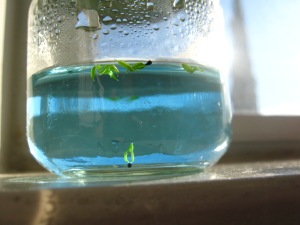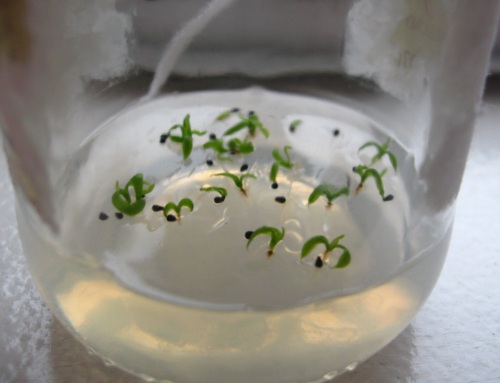Tissue Culture Experiment 2
Following on the results of my last experiment, I plated up a few more samples of D. Muscipula (venus flytrap) seeds in media jars, this time with added nutrients. I wish I had kept better track of what I added to the media, but I got distracted.

I’ll speculate that the above specimen has approximately 1/8 cups sucrose per Liter, a pinch of generic plant fertilizer, and a dash of multivitamin. This was the most dilute sample I made. Plates with higher sucrose concentrations got contaminated and had to be thrown out.
I was too stingy with the agar and the media failed to solidify. I hoped the seeds would float and be happy, but they promptly sank to the bottom. I left the jars on a windowsill, assuming they were a lost cause.
Surprisingly, the seeds germinated while completely submerged. After the leaves grew out, the seedlings floated to the surface. Despite the fact that it is the middle of winter and the plants are receiving no supplemental heat or light, they are still successfully producing chlorophyll by absorbing sugar and trace micronutrients from media.
Growing plants have greater nutrient requirements than seedlings. However, I am loathe to replate these guys for lack of a sterile work environment. I’ll see how long they last in the current media and check back later. I am happy with how things are progressing.
For my next trick, I’ll slice off a piece of my arm to grow in vitro.

